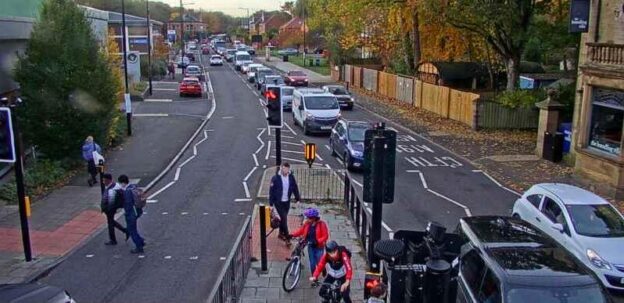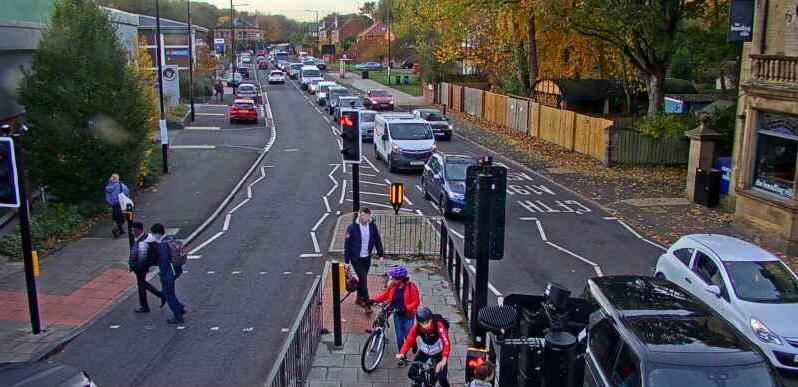
Looking south down Haddricks Mill Road – Photo from Tyne and Wear UTMC
In our last blog we looked at traffic levels on Station Road. We found that neither Station Road nor Sandy Lane were busier or more congested following the closure of Stoneyhurst and Salters bridges.
In this blog we assess the impact of Haddricks Mill roadworks and closing Dene Bridge to motor vehicles.
Just like for Stoneyhurst Road and Salters Bridge, a large proportion of people who responded to the Dene Bridge consultation thought that it would result in displaced traffic and additional congestion on surrounding roads.
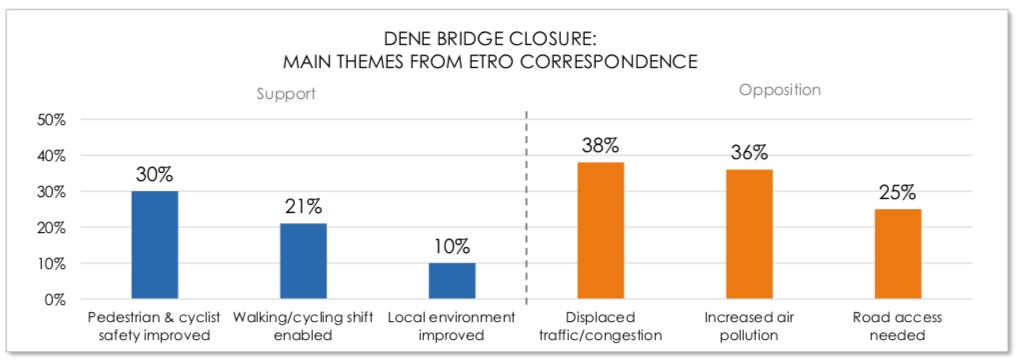
Dene Bridge Closure: Main Themes from ETRO Correspondence
Key Points
Traffic levels on Haddricks Mill Road are now back to (but not higher than) pre-2017 levels. This suggests that closing Dene Bridge to motor traffic hasn’t led to additional traffic on Haddricks Mill Road.
While the roadworks were clearly inconvenient to many, they had some positive side effects of fewer injuries, reduced traffic levels on Haddricks Mill Road and most likely a substantial, though temporary, cut in carbon emissions from less driving.
Traffic levels and air pollution measurements on Station Road (measured at the entrance to Haddricks Mill roundabout) remained high during the roadworks, but did reduce in 2020 due to Covid.
What has changed?
Three major changes have been implemented.
- Between 2017 and 2019, Killingworth Road and the Metro bridge were widened allowing the addition of a bus lane and separate cycle path.
- During 2020, Haddricks Mill roundabouts were moved slightly to increase traffic throughput. New traffic lights have a dual function of helping people cross, and controlling traffic flow to prioritise the busiest vehicle routes. Pavements have been widened and made to be shared between people walking and cycling.
- From August 2020, Dene Bridge on Castles Farm Road can no longer be used by motor traffic, but can be used by people walking or cycling.
The locations of these changes are shown on the map below.
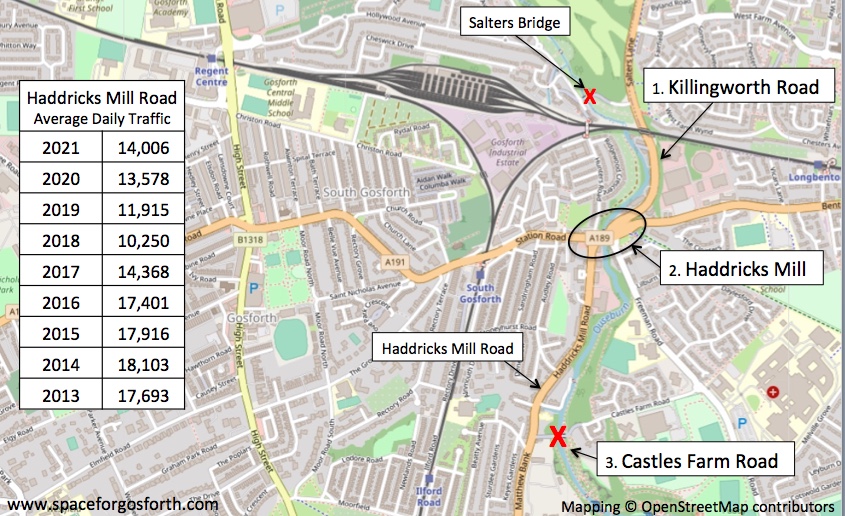
Roadworks timeline
The new Haddricks Mill junction was completed in the summer of 2020, marking the end of three years of roadworks at Haddricks Mill and on Killingworth Road.
- January 2017 – Northern Gas Networks (NGN) carry out initial exploratory work
- July 2017 – Killingworth Road and Salters Bridge close to traffic
- May 2019 – Killingworth Road opens southbound
- July 2019 – Killingworth Road open in both directions
- October 2019 – Salters Bridge re-opens to traffic
- October – December 2019 – Single lane operation on Killingworth Road
- November 2019 – Drivers warned on Salters Bridge
- February 2020 – Resurfacing works Haddricks Mill
- March 2020 – Further warnings issued on Salters Bridge
- July 2020 – Resurfacing Haddricks Mill
- August 2020 – Castles Farm Road closes to motor traffic
Haddricks Mill Road Traffic
It is clear that the roadworks had a substantial effect on traffic on Haddricks Mill Road. Almost as soon as Killingworth Road was closed, traffic levels on Haddricks Mill Road dropped from about 17,500 vehicles per day down to 12,000 – 14,000. This is shown on the graph below.
While there are some big gaps in the data between 2018 and 2020, the counts we have remained low until mid-2021.
As carbon emissions are correlated with total miles driven, this is also likely to have temporarily reduced overall carbon emissions from traffic.
Since July 2021, traffic levels have been back where they were before 2017, but no higher. This suggests that closing Dene Bridge to motor vehicles has not caused any extra traffic on Haddricks Mill Road.
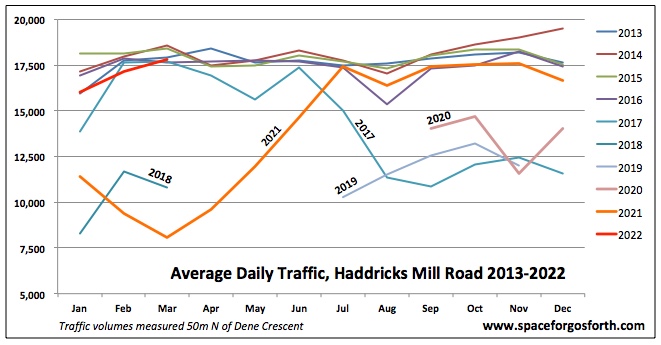
This is consistent with traffic counts that showed there was no increase in traffic on Station Road when Salters Bridge and Stoneyhurst Road were closed to motor traffic. We also previously found that traffic did not increase on either Great North Road or on Benton Lane after Killingworth Road was closed for roadworks.
These are all examples of ‘disappearing traffic’.
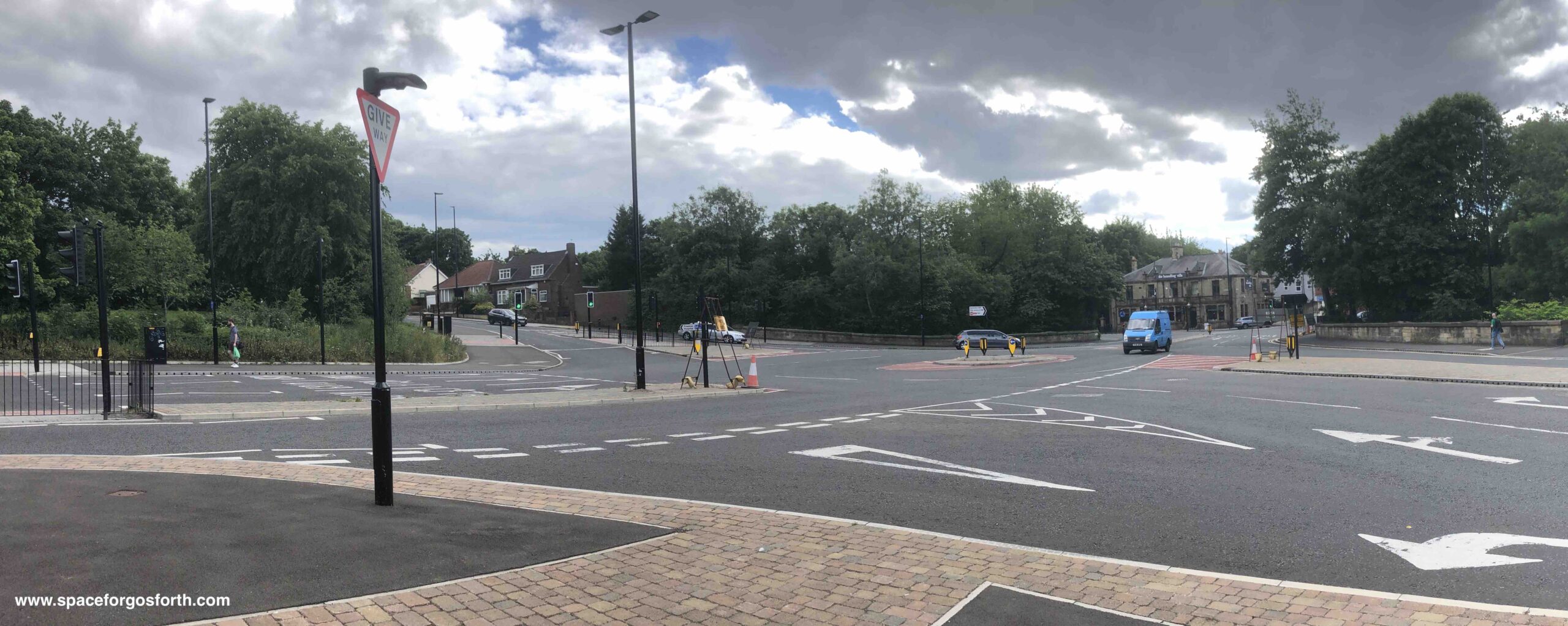
Haddricks Mill junction from Killingworth Road
Road Safety
Using the TADU Road Safety dashboard we counted injuries due to traffic collisions at Haddricks Mill junction. Between 2005 and 2016, there were 12.4 injuries on average per year making this one of the most dangerous junctions in the NE.
In 2018 and 2019 there were only two injuries in total, and only two in 2017.
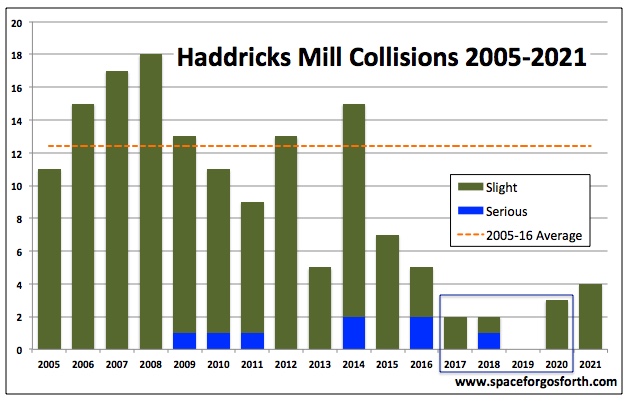
The number of injuries remained lower in 2020 and 2021, which might be due to there being less traffic due to Covid, or possibly the changes the Council believed would improve safety at the junction are having an effect.
In 2019, we wrote to the Council to express our concerns that the new junction would not reduce collisions as (a) cycle routes were too slow and wiggly so people who already cycled would most likely continue to use the road, (b) multiple entry lanes are known to make roundabouts less safe, and (c) high corner radii mean vehicles can enter and exit the roundabout at a higher speed.
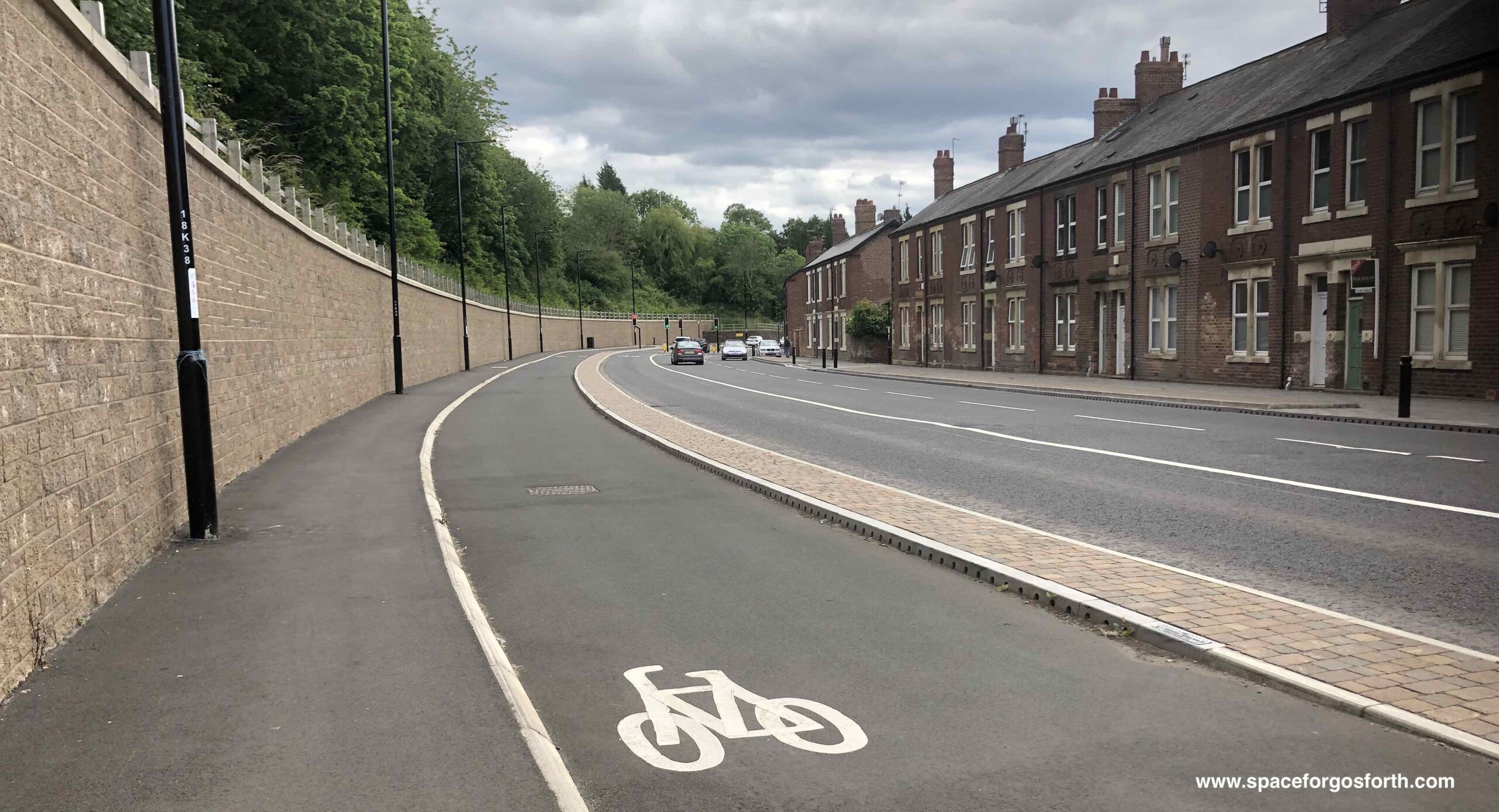
The new pavement, cycle lane and bus lane on Killingworth Road
Air Pollution
With traffic back to pre-2017 levels, and no obvious mitigations to reduce pollution in place, we remain concerned that pollution will return to previous levels.
Fears pollution levels will be dangerously high again at controversial Killingworth Roadhttps://t.co/eAJBUIAUOb
— The Chronicle (@ChronicleLive) June 4, 2019
There are two sites where Nitrogen Dioxide (NO2) air pollution is monitored near Haddricks Mill. These are at the end of Station Road and by Dene Park House on Killingworth Road.
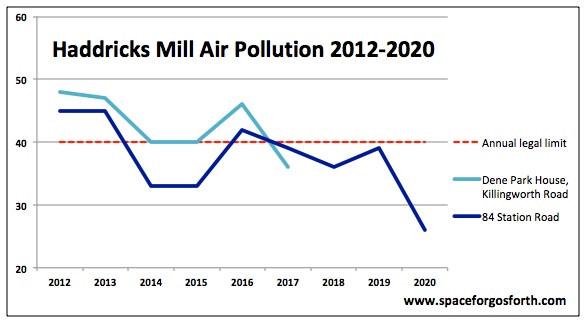
The graph above shows that the road works had little effect on air pollution on Station Road. This is perhaps not surprising as traffic levels on Station Road were fairly constant throughout.
While pollution wasn’t measured on Killingworth Road between 2018 and 2020, almost certainly it would have been much lower due to the complete absence of traffic. Pollution measurements for 2021 should be released in the autumn.
Summary
- Traffic has returned to 2016 levels now that the Haddricks Mill and Killingworth Road roadworks have finished.
- The roadworks had a positive side-effect in that, between 2017 and 2020, fewer people were injured in road traffic collisions and there was a temporary reduction in carbon emissions.
- Pollution levels, where measured, were largely unchanged due to the roadworks.
- Consistent with what we found for Salters Bridge and Stoneyhurst Road, closing Dene Bridge to motor traffic did not lead to any additional traffic on Haddricks Mill Road.

